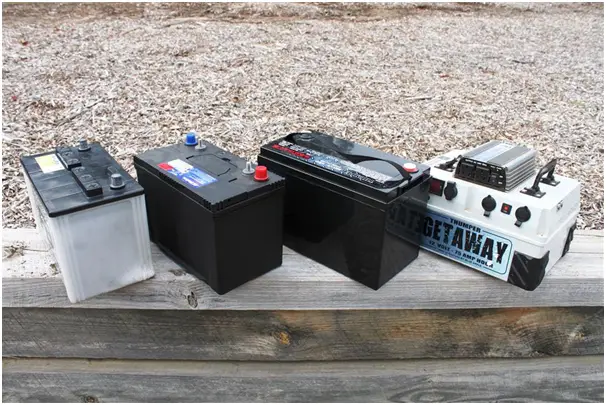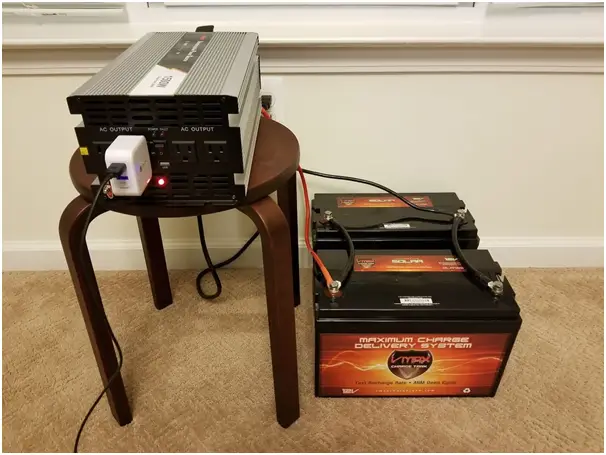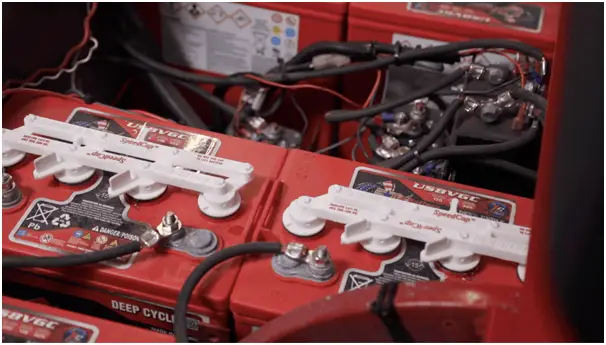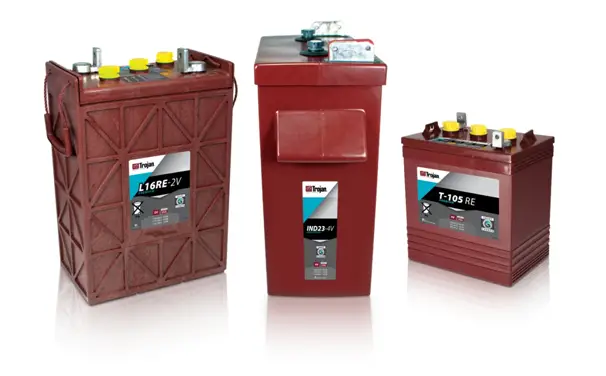Appliances present in your home or office require electricity to work, but some of those can be work with the help of batteries. In recent years, technological inventions have brought many new types of batteries to make everyone’s life easier in terms of using electricity or power. All of these batteries have different aspects as they differ in sizes, functions, features, and applications.
Here we will dig deep into one of the battery called deep cycle battery that resembles the car battery. Both of these batteries may have similar looks, but they are different from each other. The deep cycle battery has the capacity to withstand a number of discharged cycles which is why it has got this name. In this article, we have arrayed all the basic and essential information about deep cycle batteries so that you can gain more insights about them.

What is a Deep Cycle Battery?
A deep cycle battery is a storage unit in which a chemical reaction takes places to develop voltage. This voltage then results in electricity which is useful for various purposes such as solar, camping, caravan, camper vans, marine, motor homes, etc. A deep cycle battery is designed to be cycled, i.e., discharged and charged multiple times to deliver power at a steady rate for a longer duration, unlike a car battery which aims to provide a burst of power for a short period.
This feature makes the deep cycle battery perfect for a range of commercial and recreational applications. It has thicker plates and hence survives a number of discharge cycles. You will find different types of deep cycle batteries in the market such as gel batteries, flooded batteries, AGM batteries (Absorbed Glass Mat), and lithium-ion batteries. All these batteries are manufactured differently. You will find various sizes in them where the larger the size, the more capacity it will have. You can have a look at BCI Group 4D vs 8D battery to find the relevant one for your needs.
The gel batteries, as the name implies, contains a gel-like substance in them whereas the AGM batteries consist of acid suspended in a glass mat separator. The flooded battery is most common amongst all, and it is similar to a standard lead-acid battery present in your car. These three batteries, i.e., gel, AGM, and flooded batteries, are most frequently used in off-grid scenarios. But, the new generation lithium-ion batteries, along with off-grid, are expected to be used in grid-connected households.
Also Read:
- Advantages and Disadvantages of Solar Energy
- Advantages and Disadvantages of Nuclear Energy
- Advantages and Disadvantages of Geothermal Energy
How to Rate Deep Cycle Batteries?

The deep cycle batteries are rated through amp-hours (Ah) which means one amp for one hour. It can also be stated as 10 amps for 1/10 of an hour. It refers to the capacity of chemical energy of the battery, which is then converted into electrical energy. On the contrary, it can also be seen as the discharge rate of the battery that measures the time it requires to discharge the battery before it needs another recharging.
These batteries tend to reduce their capacity if they are discharged in a shorter period. Moreover, their amp-hour capacity can reduce by 50 percent, and it can affect the number of battery cycles. Contrarily, if the battery is discharged at a steady rate of its current over its number of hours, then it is termed as ‘C’ rating.
For example, some of the small batteries rate at the C20 rate, which means they will deliver their amp-hour capacity if discharging is over 20 hours. Other types of batteries in large stand-alone power systems rate at C100, which means they need to discharge over 100 hours or 4 days. These batteries typically offer a life span of 15 years or so.
Maintenance of Deep Cycle Batteries:

Lead-based deep cycle batteries that are used in off-grid solar power systems contain much thicker lead plates than the car batteries to make them last longer. Thus, they should not be discharged below 20 percent of their full capacity as the internal resistance causes heat and leads to damage when recharging.
Some of the renewable energy systems are manufactured with a low-charge or low-voltage warning light. This light helps to prevent the type of damage that shortens battery life. Another way to increase the battery shelf is by storing them at lower temperatures as the chemical reactions in batteries are slower. But, to reach their maximum voltage, the batteries need to be returned to room temperature. That is why many manufacturers don’t recommend refrigerating batteries.
The conventional deep cycle batteries require a considerable amount of attention which will not be the case with the next generation of energy storage, i.e., lithium-ion batteries. These batteries feature highly automated management systems that don’t require much maintenance and monitoring.
Safety Hazards

Batteries tend to explode as they carry large amounts of current and there is also a chance of short circuit in case of malfunctions. The main causes of battery explosion are either recharging the non-rechargeable batteries or short-circuiting the batteries. It can also happen due to overcharging as they release hydrogen in the air. This is because of the electrolysis of the water in the electrolyte. Normally, this gas dissipates quickly but it can ignite by even a small spark from cables. On the other side, hydrogen gas production isn’t a problem when you are using lithium-ion batteries.
If you charge the deep cycle batteries beyond their capacity, then their battery components are at risk of damage and the worst case would be battery explosion. Remember that the same thing can happen with maintenance-free batteries like sealed or VRLA (Valve Regulated Lead Acid). These batteries contain the AGM and Gel batteries. The reason behind the explosion in these batteries is either valve failure or blockage. This situation can also create pressure within the cells until there is any short-circuit which can later lead to an explosion. Hence, it is necessary to keep proper attention on their handling and utilization as even a little negligence can create severe danger.
Conclusion:
We hope that now you are aware of what deep cycle batteries are and what their specifications are. No matter which one you select for your needs, make sure you remember the safety hazards to keep yourself safe from any dangers.









